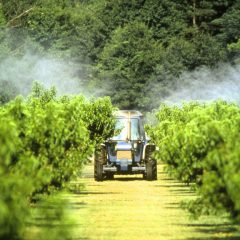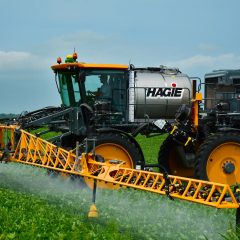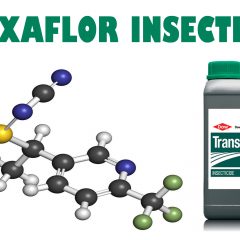In a report released this month, EPA’s Office of Inspector General lays out in no uncertain terms that EPA’s regulation of land-applied biosolids “had weaknesses and may not fully protect human health and the environment.” This “sewage sludge” is “solid, semisolid or liquid residue generated during the treatment of domestic sewage.” After processing at wastewater […]
Read More, References, Comment »
A dark new climate report was released on Black Friday, a day usually reserved for the kind of news someone wants overlooked. The Fourth National Climate Assessment was produced by 13 federal agencies including the Department of the Interior, EPA, NOAA, and the Department of Commerce. Together with experts from non-governmental science institutions, they make up […]
Read More, References, Comment »
The State of California is taking steps to restrict use of the insecticide chlorpyrifos over concerns it is “harming the brains of babies.” In temporary guidelines issued this week, the California Department of Pesticide Regulation recommends farmers discontinue use on most crops and increased the required spray perimeters for the rest. They also order a […]
Read More, References, Comment »
The New York Times reported this week that nitrate contamination of private wells in agricultural regions around the Midwest is turning water quality and agricultural regulations into focal points of many local and statewide elections. In communities surrounding the agricultural regions of Wisconsin, Iowa, and beyond, private wells are failing water quality standards, often by […]
Read More, References, Comment »
Much will be said about the EPA’s October 31, 2018 decision to extend for two more years the conditional registration of the three dicamba-based herbicides registered for post-emergence, “over the top” (OTT) applications on soybeans and cotton. The basics of the EPA’s decision are simple and not entirely meaningless in terms of reducing the extent […]
Read More, References, Comment »
AgPro reports that the first dicamba drift damage trials are on track to begin a year from now in October 2019. Several cases have been combined into a federal multidistrict litigation, and that case is moving forward in U.S. District Court in Missouri. The first case in this MDL to be heard will be that of […]
Read More, References, Comment »
Note to Readers: Steve Smith, Chairman and founder of the Save Our Crops Coalition and R+D Director of Red Gold (a major midwest tomato processor), has been actively engaged in the evolution and approval of dicamba-resistant crops. He has raised concern — and more recently alarm — over the damage done to non-target crops, trees, […]
Read More, References, Comment »
Over-the-top dicamba use on Roundup Ready Xtend soybeans and cotton will be allowed by EPA for up to two more years, with some additional use restrictions. This means farmers will be able to continue using the controversial new dicamba formulations XtendiMax, FeXapan, and Engenia that have damaged millions of acres of cropland, gardens, and other […]
Read More, References, Comment »
A consortium of consumer, animal, and food policy groups has released the latest edition of their Chain Reaction report analyzing antibiotic use on the livestock farms producing meat for the country’s largest restaurant chains. This year’s edition report focuses on the iconic American hamburger, surveying antibiotic policies at popular national burger chains and grading each on […]
Read More, References, Comment »
With neonicotinoid insecticides under fire for contributing to pollinator decline, Dow AgroSciences is pushing its sulfoxaflor insecticide as an alternative. As Environmental Health News reports, Dow applied to the EPA for an expansion of the registration of sulfoxaflor to allow use on “rice, avocados, residential ornamentals and at tree farms and greenhouses.” But, is this new […]
Read More, References, Comment »










